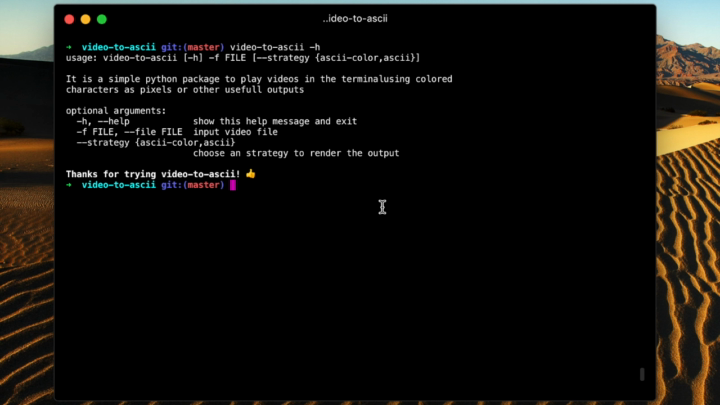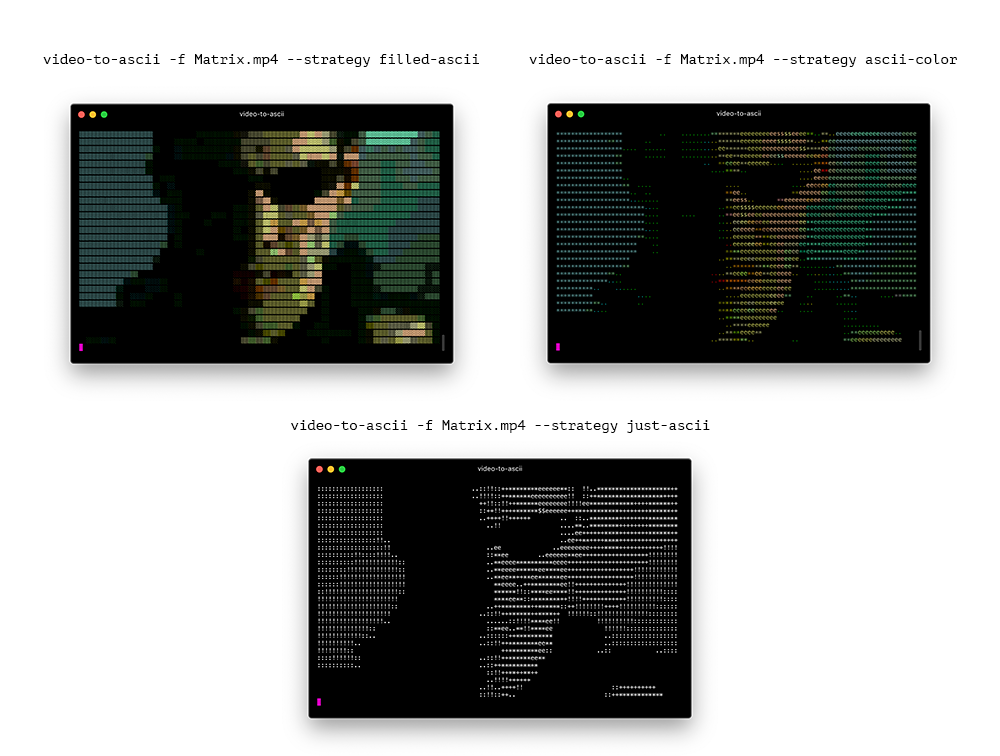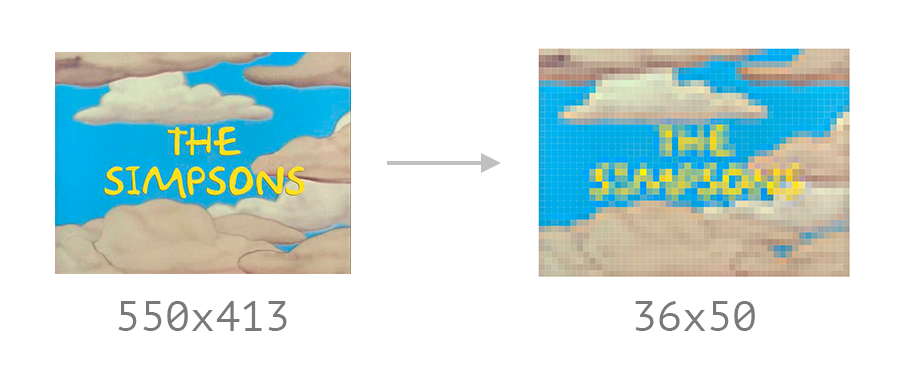- Python3
- PortAudio (Only required for installation with audio support)
- FFmpeg (Only required for installation with audio support)
- Linux or MacOS ... by now
Standard installation
$ pip3 install video-to-asciiWith audio support installation
$ pip3 install video-to-ascii --install-option="--with-audio"Just run video-to-ascii in your terminal
$ video-to-ascii -f myvideo.mp4--strategy
Allow to choose a strategy to render the output.
-o --output
Export the rendering output to a bash file to share with someone.
-a --with-audio
If an installation with audio support was made, you can use this option to play the audio track while rendering the video ascii characters.
Every video is composed by a set of frames that are played at a certain frame rate.
Since a terminal has a specific number of rows and columns, we have to resize our video to adjust to the terminal size limitations.
To reach a correct visualization of an entire frame we need to adjust the frame height to match the terminal rows, avoiding using more characters than the number of terminal columns.
When picking a character to represent a pixel we need to measure the relevance of that pixel's color in the frame, based on that we can then select the most appropriate character based on the relative luminance in colorimetric spaces, using a simplified version of the luminosity function.
Green light contributes the most to the intensity perceived by humans, and blue light the least.
This function returns an integer in the range from 0 to 255, we assign a character according to density to show more colored surface for areas with more intense color (highest values).
CHARS_LIGHT = [' ', ' ', '.', ':', '!', '+', '*', 'e', '$', '@', '8']
CHARS_COLOR = ['.', '*', 'e', 's', '@']
CHARS_FILLED = ['░', '▒', '▓', '█']The reduced range of colors supported by the terminal is a problem we need to account for. Modern terminals support up to 256 colors, so we need to find the closest 8 bit color that matches the original pixel in 16 or 24 bit color, we call this set of 256 colors ANSI colors.
Finally, when putting it all together, we will have an appropriate character for each pixel and a new color.









